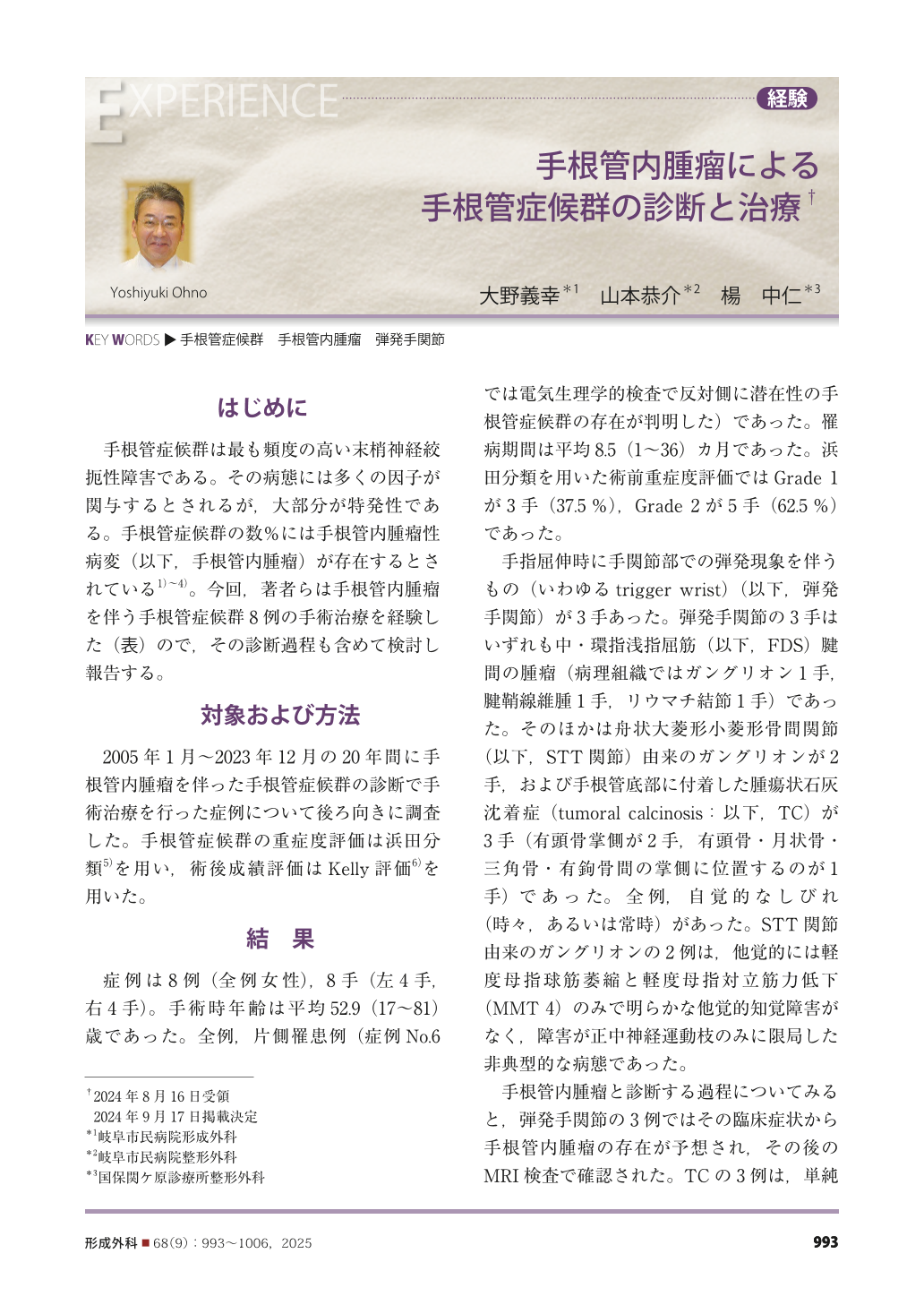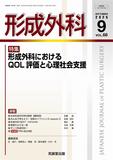Japanese
English
- 有料閲覧
- Abstract 文献概要
- 1ページ目 Look Inside
はじめに
手根管症候群は最も頻度の高い末梢神経絞扼性障害である。その病態には多くの因子が関与するとされるが,大部分が特発性である。手根管症候群の数%には手根管内腫瘤性病変(以下,手根管内腫瘤)が存在するとされている 1)~4)。今回,著者らは手根管内腫瘤を伴う手根管症候群8例の手術治療を経験した(表)ので,その診断過程も含めて検討し報告する。
Carpal tunnel syndrome (CTS) is the most prevalent nerve entrapment disease. Its pathophysiology is multifactorial and defined in most cases as idiopathic due to nerve entrapment inside the narrow carpal canal. CTS secondary to a tumorous lesion is relatively rare. We treated eight patients with CTS secondary to a tumorous lesion between January 1, 2005 and December 31, 2023. The patientsʼ mean age was 52.9(17~81) years. The CTS of three of the patients was accompanied by trigger wrist caused by a tumor between the third and fourth flexor digitorum superficialis (FDS) tendons; the histopathologies were ganglion, fibroma, and rheumatoid nodule, respectively. Another group of three patients had tumoral calcinosis in the carpal tunnel that was detected by an X-ray examination. The remaining two patients had ganglion cysts from scaphotrapeziotrapezoid (STT) joints. In all eight of the cases, open release of the transverse carpal ligament was performed and the lesion was removed. The neurological symptoms subsided after surgery in all cases. Most of the patientsʼ tumorous lesions (88%) accompanied by CTS could be detected by the detailed physical examination and initial wrist X-ray including the carpal tunnel view. When a tumorous lesion in the carpal canal is suspected, an MRI and/or CT examination must be considered. Ultrasonography is useful to reconfirm the lesion statically and dynamically, and to check the condition of the median nerve.

Copyright© 2025 KOKUSEIDO CO., LTD. All Rights Reserved.


